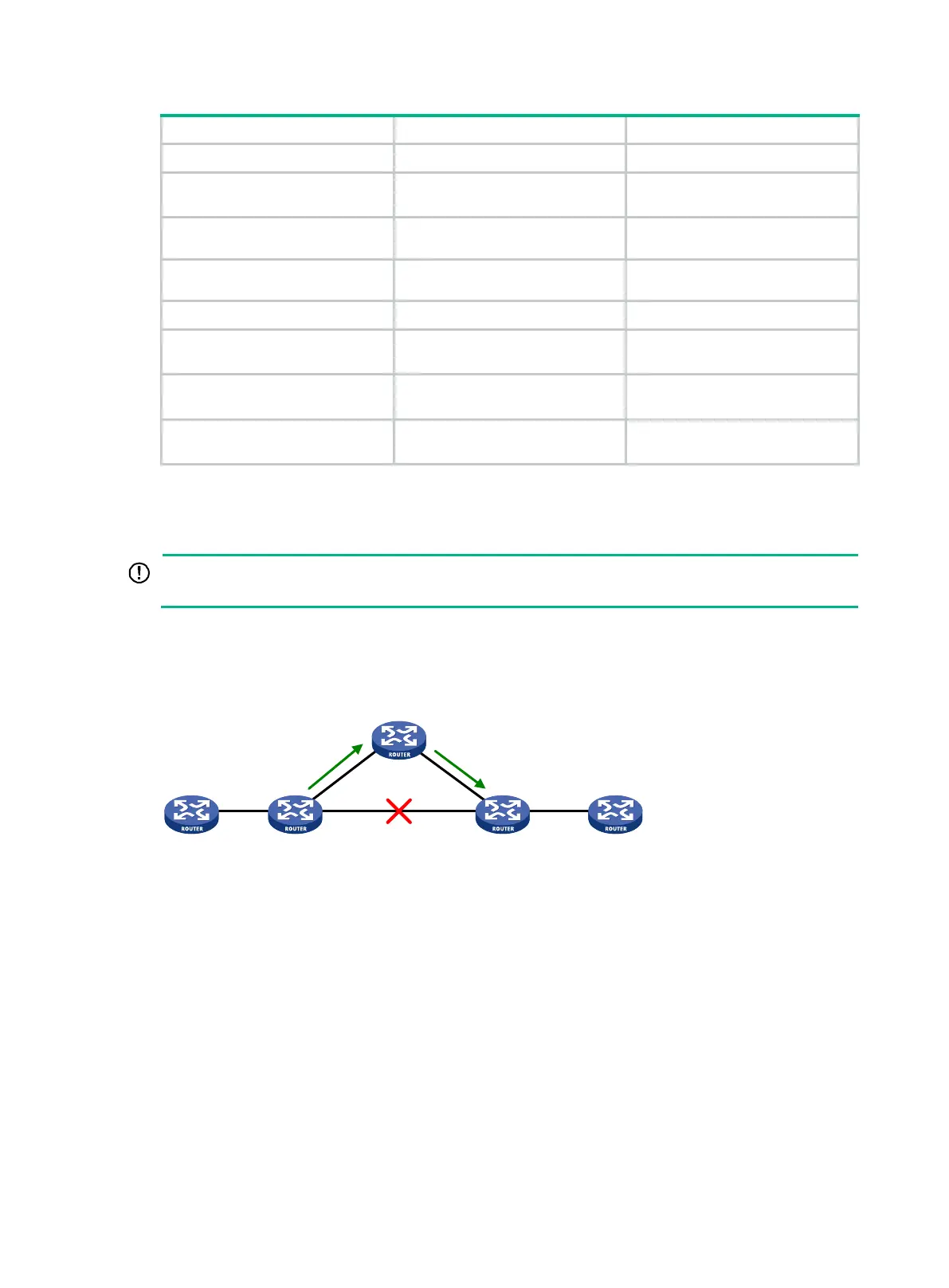470
1. Enter system view.
system-view
N/A
2. Enable an IS-IS process and
enter IS-IS view.
isis
[ process-id ] [
vpn-instance
vpn-instance-name ]
N/A
3. Configure the NET for the
IS-IS process.
network-entity
net By default, no NET is configured.
4. Enter IPv6 address family
view.
address-family ipv6
[
unicast
]
N/A
5. Return to system view.
N/A
6. Enter interface view.
interface
interface-type
interface-number
N/A
7. Enable IPv6 for IS-IS on the
interface.
isis ipv6 enable
[ process-id ]
By default, IPv6 is disabled for
IS-IS on an interface.
8. Enable BFD for IPv6 IS-IS.
isis ipv6 bfd enable
By default, BFD for IPv6 IS-IS is
disabled.
Configuring IPv6 IS-IS FRR
ECMP routes do not support FRR.
A link or router failure on a path can cause packet loss and routing loop. IPv6 IS-IS FRR enables fast
rerouting to minimize the failover time.
Figure 110 Network diagram for IPv6 IS-IS FRR
In Figure 110, after you enable FRR on Router B, IPv6 IS-IS FRR automatically calculates or
designates a backup next hop when a link failure is detected. In this way, packets are directed to the
backup next hop to reduce traffic recovery time. Meanwhile, IPv6 IS-IS calculates the shortest path
based on the new network topology, and forwards packets over the path after network convergence.
You can assign a backup next hop for IPv6 IS-IS FRR in the following ways:
• Enable IPv6 IS-IS FRR to calculate a backup next hop through Loop Free Alternate (LFA)
calculation.
• Designate a backup next hop with a routing policy for routes matching specific criteria.
Configuration prerequisites
Before you configure IPv6 IS-IS FRR, complete the following tasks:
• Configure IPv6 addresses for interfaces to ensure IP connectivity between neighboring nodes.
Backup next hop: Router C
Router ENext hop: Router D
Router B

